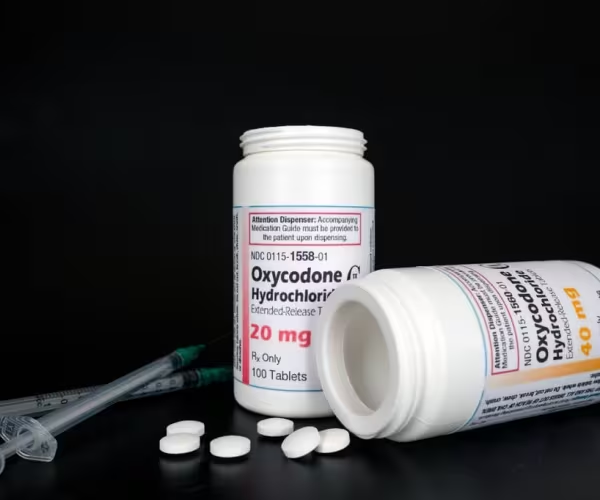US: Only 1 in 4 People Get Meds to Fight Opioid Addiction

Adobe Stock
Just 25% of people battling opioid use disorder are getting medications aimed at helping them quit and potentially avoid an overdose, new data shows.
Boosting access to proper treatment might save countless lives.
“In 2022, 81,806 opioid-involved overdose deaths were reported in the United States, more than in any previous year,” noted a team led by Deborah Dowell, chief medical officer at the U.S. Centers for Disease Control and Prevention’s Division of Overdose Prevention.
Dowell and her colleagues looked at data collected for 2022 as part of the National Survey on Drug Use and Health. The survey involved almost 57,000 adults.
Opioid use disorder is defined as “a problematic pattern of opioid use leading to clinically significant impairment or distress,” the study authors wrote in their report.
According to the survey, in 2022 a total of 3.7% of U.S. adults met that criterium and were having problems with oxycodone, Vicodin, heroin or any other form of opioid. That’s nearly 9.4 million people.
But according to the new data, only a bit more than half (55.1%) received any kind of treatment to help them kick their opioid overuse, and only 25.1% accessed medications that doctors know can help folks wean themselves off opioids.
“These medications, especially buprenorphine and methadone, substantially reduce overdose-related and overall mortality [death] but are markedly underused,” Dowell and her group wrote.
Of course, convincing a person with an opioid dependence that they need help is often tough: The study found that 42.7% of those whose could benefit from treatment “did not perceive that they needed it.”
Among those who did get treatment, men were more likely to receive it than women, and folks in their 30s and 40s were more apt to get it than people younger or older than that age group.
White Americans were more likely to get appropriate opioid use disorder treatment than with Black Americans or Hispanics, the data showed.
What’s holding people back from getting the anti-addiction medications that could help them?
According to Dowel’s group, outdated opinions by some doctors could be a factor.
“Some clinicians prefer an approach that does not include medications, and some hold beliefs equating medications for opioid use disorder with illegal substance use,” they wrote.
For example, methadone is only authorized to be dispensed via federal government-sanctioned opioid treatment programs, but many counties across the United States have no such programs in place, the authors noted.
And while two other drugs, buprenorphine or naltrexone, can be more freely dispensed “barriers exist,” the team said. Many pharmacies don’t stock buprenorphine, for example, and many treatment facilities don’t use it. Medicaid and other insurers also fail to cover the cost of buprenorphine.
More must be done to convince people who are struggling with opioid misuse that treatment is needed.
“Nonjudgmental support and harm reduction approaches can establish rapport, build trust and reduce overdoses and other harms among persons not ready for treatment,” Dowell and her colleagues said.
Patients and doctors alike must also understand how valuable meds like methadone, buprenorphine and naltrexone can be in treatment.
“Increasing awareness among persons who use drugs and their families, friends and other contacts that medications for opioid use disorder are effective is critical,” they said.
The findings were published June 27 in the CDC journal Morbidity and Mortality Weekly Report.
© HealthDay
For more on this story go to: NEWSMAX




